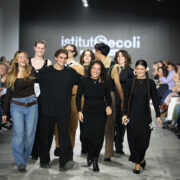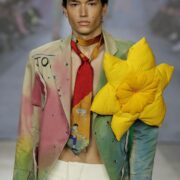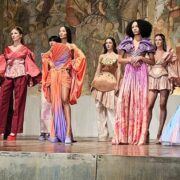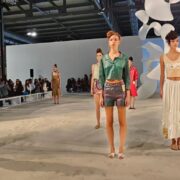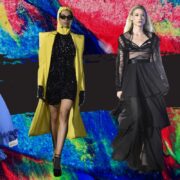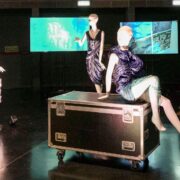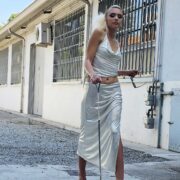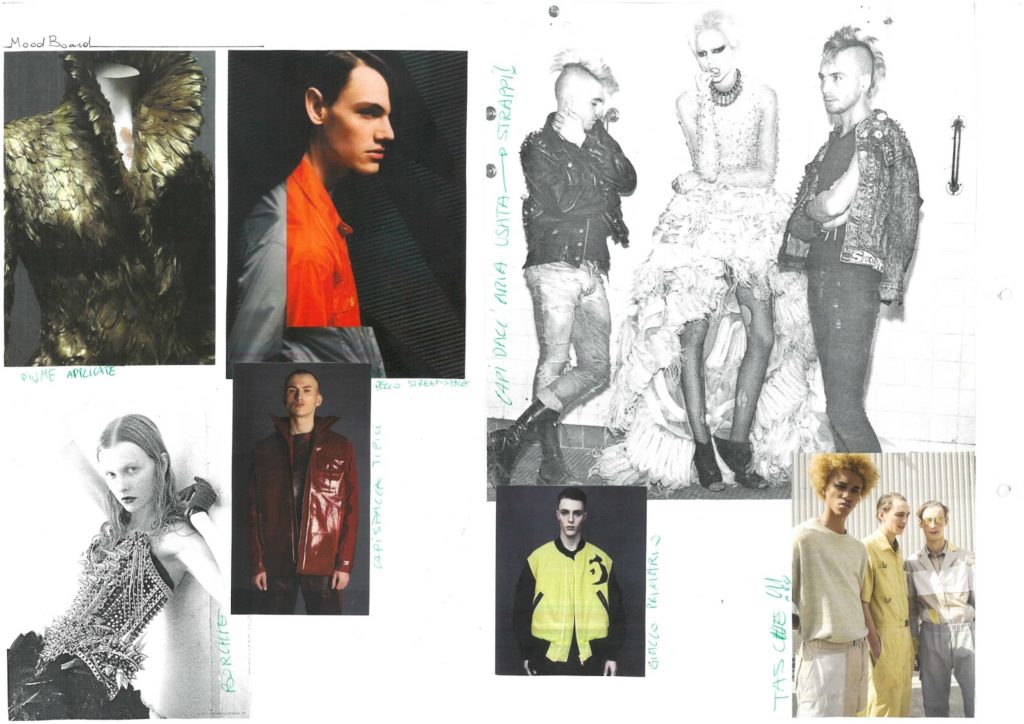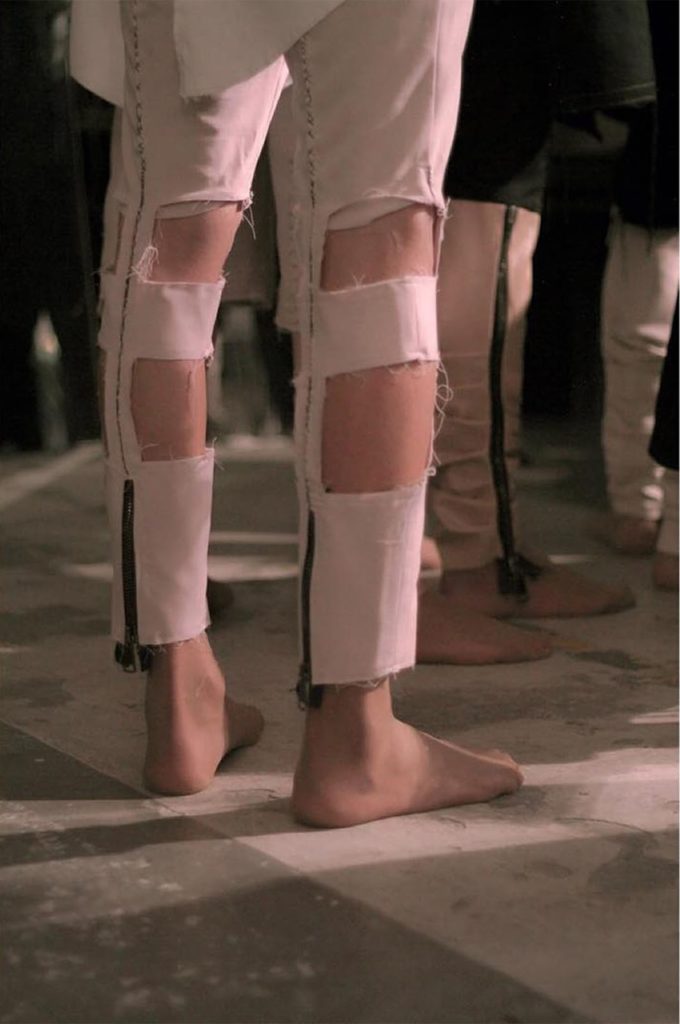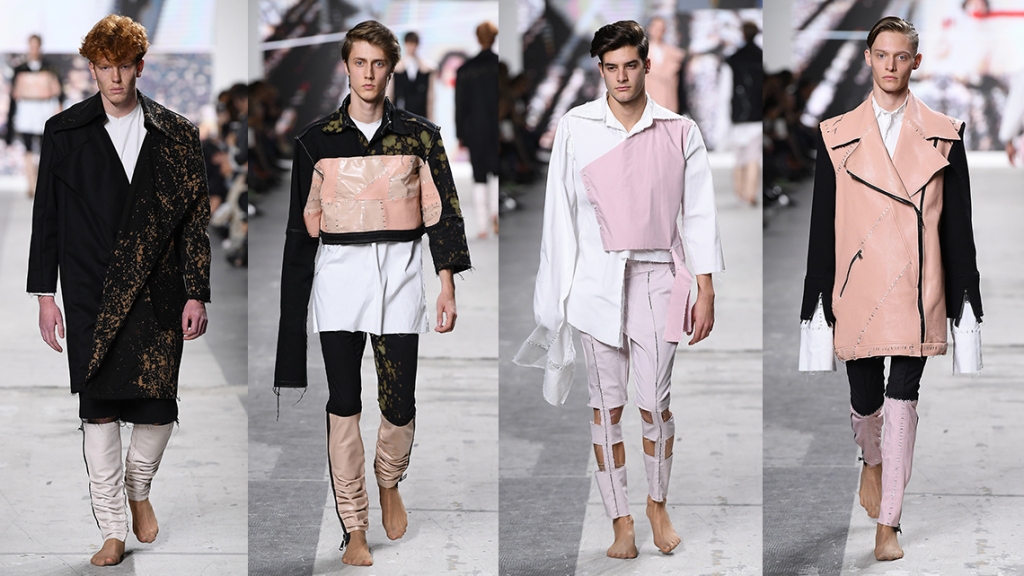
uncertain health conditions, the rebirth and the discovery of the wonderful Beauty
of Life through creativity. Today we meet FILIPPO TODISCO, someone more than a
simple fashion designer.
want to be honest. When I met Filippo Todisco I wasn’t prepared to his incredible
story. I knew only some details about his
life and seen his collection at Fashion Graduate Italia last November. I wrote a
post (here) about the collections of young designers coming from the best
Italian fashion schools, describing his creations as something really
interesting in the panorama of new generations of designers.
now, after having talk to him, I can clearly understand the great value of his
work and vision. It’s not important that he is really young (only 25 years old).
The things he said, the so natural way he spoke about his “series of
experiences”, his innate talent and the particular concept he had about fashion
and life in general, made him one of the most worthy person I ever met.
was born in 1993 in Milan from a normal family, but his life was signed by two important
events, the loss of is mother when he was only a child and his own rare
disease, called “Severe Aplastic Anemia”. To use his words, a gift of life.
With his heavy baggage of wonderful gifts that life has
given him, Filippo attended to Istituto Secoli, one of the most renowned
fashion school of Italy, graduating in 2017 after three years of hard work,
passion and unbridled creativity.
This
interview is not only a simple chat between a blogger and an inteviewee, but a
moment of reflection, a deep narration whose keywords are the strenght of will
and the urgent desire to live and create.
age. How much discovering new worlds have change your life and influenced your
style?
traveled a lot since I was a child, visiting great part of Asia, Africa and of the
Atlantic and Pacific islands for the love of my parents for scuba diving. They
never liked the package tours or the classic tourist destinations. I remember
that when I was 7 years old we visited the Indonesian Borneo, with a 2-days trip
and being the first Italian tourists who reached the resort. These travels were
beautiful experiences, a way to see different cultures through an atypical approach.
this influenced my work. Often people said me that my works, especially the
ready-to-wear pieces, are always too rich, excessive, only for catwalk. That’s
why my vision of apparel is the result of a series of influences coming from
different countries and cultures. From Asia or sub-cultural movements so far
from a Milan-born boy.
 |
| Moodboard and sketches by Filippo Todisco |
traveled all around the world until 5 ears ago. Then what’s happened?
years ago, from day to night, I found out I have a rare disease called “Severe Aplastic Anemia”.
you want to talk about it or it’s a problem?
is based on this fact. My rare dysfunction of bone-marrow changed my life in a
crucial way. Honestly that was probably the happiest period of my life, despite
the disease.
It’s really rare and when I discovered it in Italy were been
treated only a few cases. Generally it affects older people, but five years ago
I was barely an adult. So the
situation was more difficult for me. I don’t know the cause of the disease, so
I treated it as a normal Leukaemia, with chemotherapy, radiotherapy and immunoglobulin.
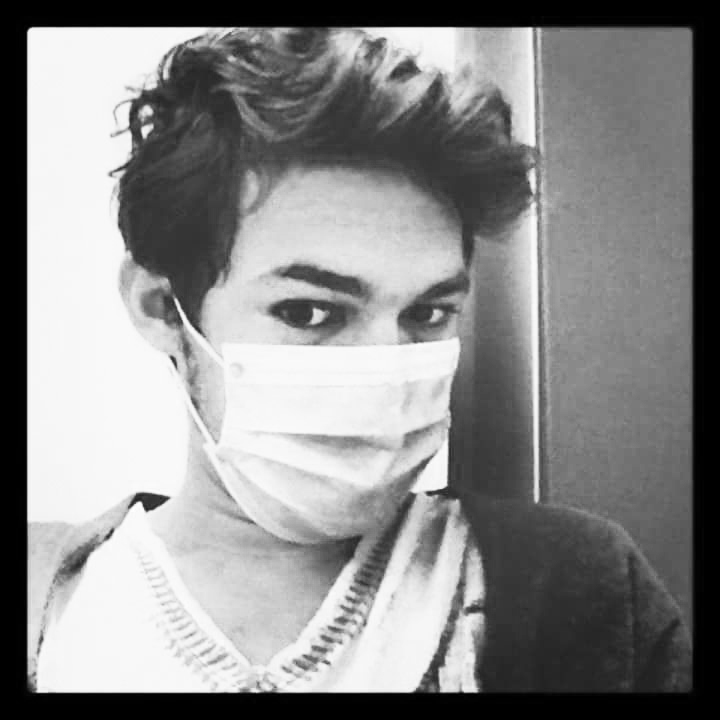 |
| Filippo during the treatment of his disease |
Then in June 2012 I got into coma for one month and half, waking up in July. It was
a kind of miracle. But when I woke up I could not speak, walking, eating or
making anything. In a week I made rehabilitation and cure, making the transplantation
in August from my brother, who was incredibly 100% compatible although not my
twin. It was just dumb luck!
disease really rare?
yes, in the world there are only 300 cases. It’s all a great question mark. I
could feel good for a year, a day or ten year, who knows. I’m constantly under control.
The coma produced different things, above the initial inability. I had to
re-learn everything, also how to use a pencil.
Now I have also a rare form of epilepsy,
with symptomps like bright flash of light, a world seen in technicolors and then a blackout. Anyway this was probably the most important chapter of my life, because has
modified my vision about the world and what I do. This was one of the most
beautiful experiences of my life.
 |
| A detail from the collection “Pancit0-penia” |
beautiful? Seen from outside, for who don’t know this kind of situation, it
appears really terrible!
really vivid memory of my parents, especially of my father, who maybe relived
the same things he felt with my mother. For them was terrible, because I spent
6 months alone in a glass cage, speaking with people through a telephone
because I was completely undefeded.
of the event, what emerge is your incredible strenght.
aesthetically very particular, extremely skinny, totally shaved and covered by miniscule
livids. But it was a happy period, except for the coma that I don’t remember. I
lived the treatment as a normal thing to do. Also if I was closed into my hospital
room, I had my personal wardrobe with all my clothes, my inseparable Alexander
McQueen’s foulard, with music blaring, waking up in the morning and having the
most normal routine as possible.
 |
| Fashion sketch by Filippo Todisco |
moment was like a fashion show. I used to go around with a completely studded mask!
I believe that life is a series of experiences and the disease was one of
these. Someone travels, someone else works and I’ve cured myself. In hindsight now, I understand what it meant and how much it costed. Thinking about my job and
looking how I draw a sketch now, I realized that everything has changed. But the
show must go on!
it’s in everything I do, in my vision about fashion.
memory of my mother, who died when I was 5 years old for a brain cancer. My love
for fashion was born in that moment. I remember her wardrobe, while she was
wearing her furs or preparing the baggage to go in Rome for some experimental
treatment. My memories about my mother are all connected with fashion, but I
don’t really know if she followed fashion trends. Also growing up in Milan was a
great occasion to be always in contact with fashion.
What’s happened?
was Alexander McQueen, who attended that school. After long and suffocating years
spent at the science high school, having to decide where to study I was
fascinated by Saint Martins, that was my first choice. Initially I wanted to
make a summer course, that I didn’t, then I made the application tests and I
was really happy because they selected me.
But I was in the middle of my
treatment pathway, because in the first three years after the marrow transplantation
I had continuous controls every two days. Stay in London was incompatible. So
with a heavy heart I had to leave that idea. Then I made another important
choice, that was Istituto Secoli.
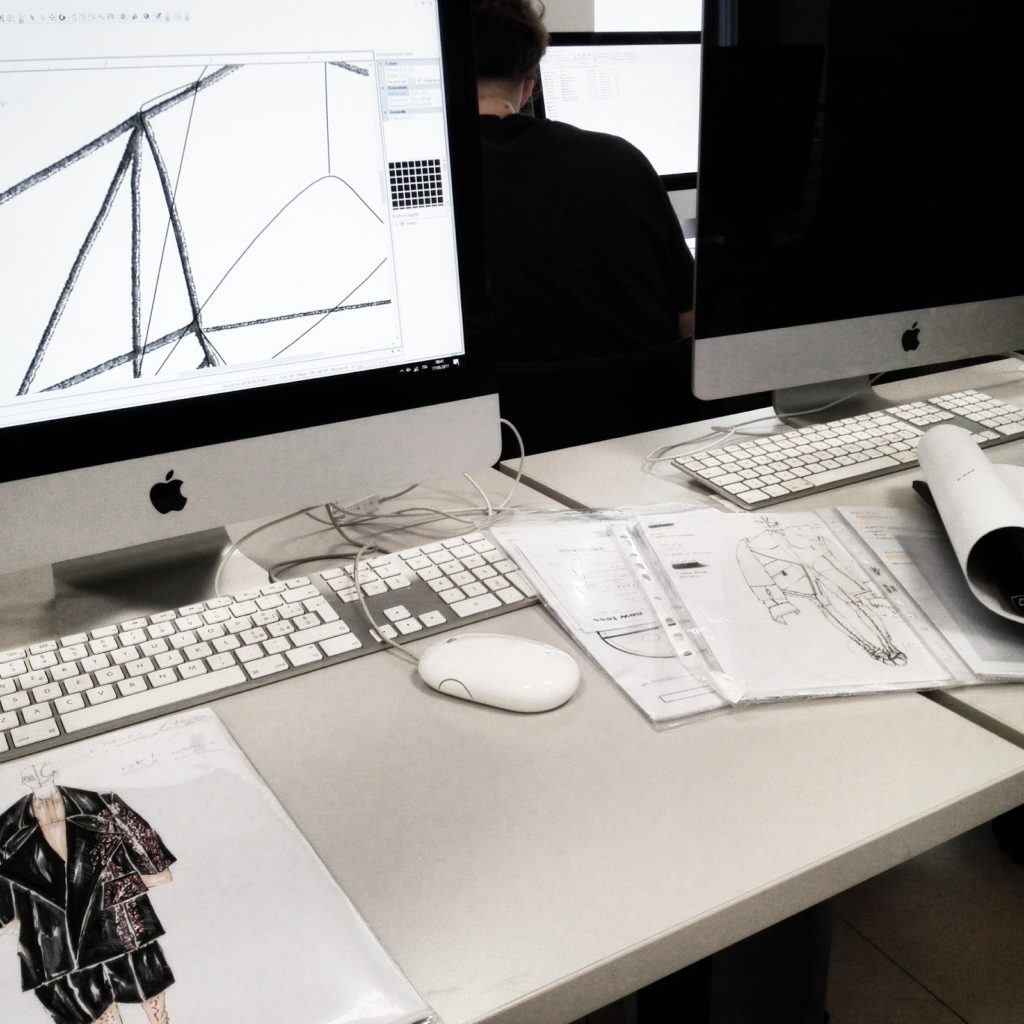 |
| Work in progress of the collection at Istituto Secoli |
Why Istituto Secoli and not some other school in Milan?
was a dressmaker and my maternal grandmother was a patternmaker, working both for over 30 years for Haute Couture and high-level made-to-measure fashion.
They explained
me that in many occasion they worked with designers who were enable to make a
simple hem of a pants, who proposed sketches that when realized in paper and then
in fabric were unrealizable. Like adherent dresses in fur and not-elastic fabrics, but
designed without cuts and darts. Practically impossible. So they adviced me to
learn pattermaking and tailoring, because only in this way I can be able to realize
a garment exactly like I sketched, from the general aspect to the smallest
detail. So Istituto Secoli was an automatic choice.
 |
| Work in progress of the collection at Istituto Secoli |
Marangoni. All excellent schools, which give great importance to style and
research, but it wasn’t what I was looking for my future. I wanted a strong
skill in fashion design, but with a meticulous preparation about patternmaking
and tailoring. Today, after over three years, I can say that it was the best
choice.
 |
| Work in progress of the collection by Filippo Todisco at Istituto Secoli |
on it also for the presentation at Fashion Graduate Italia last November. The whole
collection was about 35 outfits, more than 250 garments entirely designed until
the most detailed stitches.
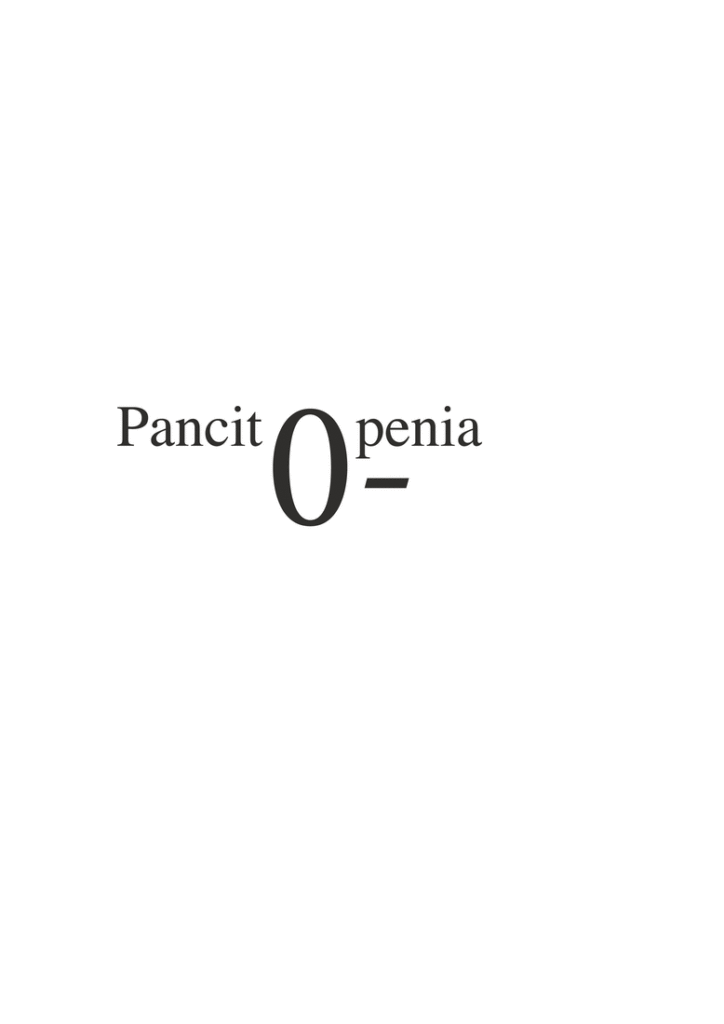 |
| Moodboard and sketches of the graduate collection “Pancit0-penia |
collection, it’s right?
parts of the clothes. The collection has a strong stylistic image, but it’s really
complete only thanks to the the modelling and sartorial background I had at
Istituto Secoli.
 |
| Detail from the collection “Pancit0-penia” |
All the garments are destructured, but not in the common sense
of fashion terminology, according to which a destructured jacket has a simple construction and
is unlined. I started my progect with a simple basic concept. Normally a
garment is cutted and sewed in a certain way. Instead I smashed it to pieces, destroying what a fashion designer usually makes and then reassembling the
garment putting in the foreground all the things that are usualy
hidden.
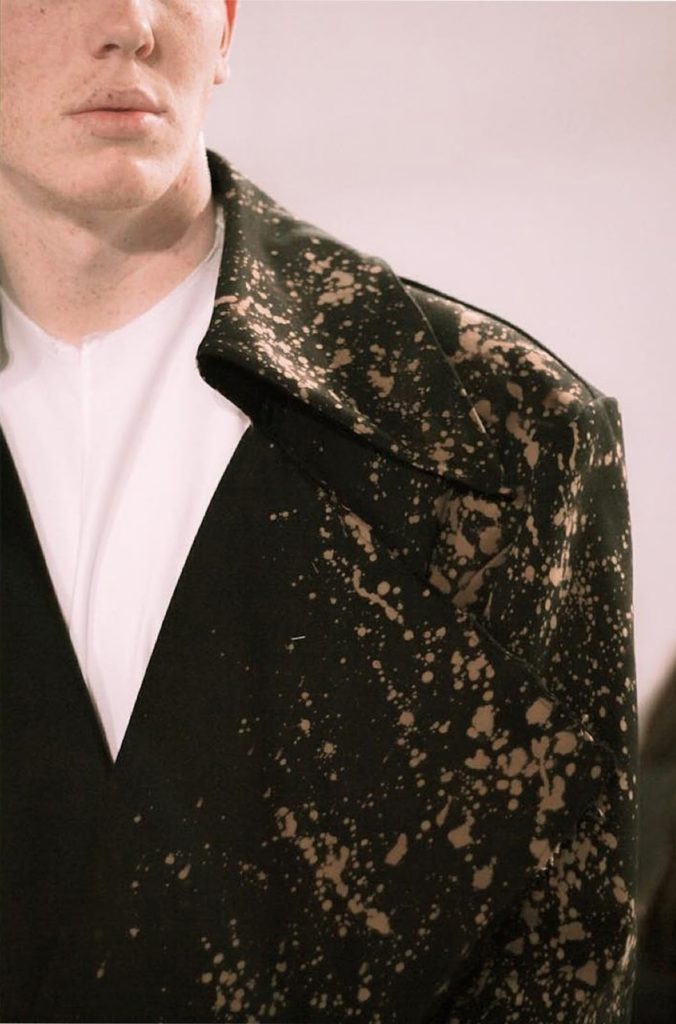 |
| Detail from the graduate collection “Pancit0-penia” |
Which means the constructive parts that anybody wants to see
because considered awful?
imperfections that a designer should eliminate because clothing for fashion shows
or the shops should stay within a specific
quality range. These things for me should be emphasized through the
construction of the garment and putted under the spotlight, because all the
thing we usually define as awful make a garment unique, beautiful and perfect.
collection?
medical term, which indicates a chronic clinical situation with the absolute
absence of all the blood cells, typical of disease like mine. Zero-Negative in
my vision is the universal blood-type, it’s mine and so it indicates from the
individual to the universal human being. In my concept it’s one, nobody and
everybody.
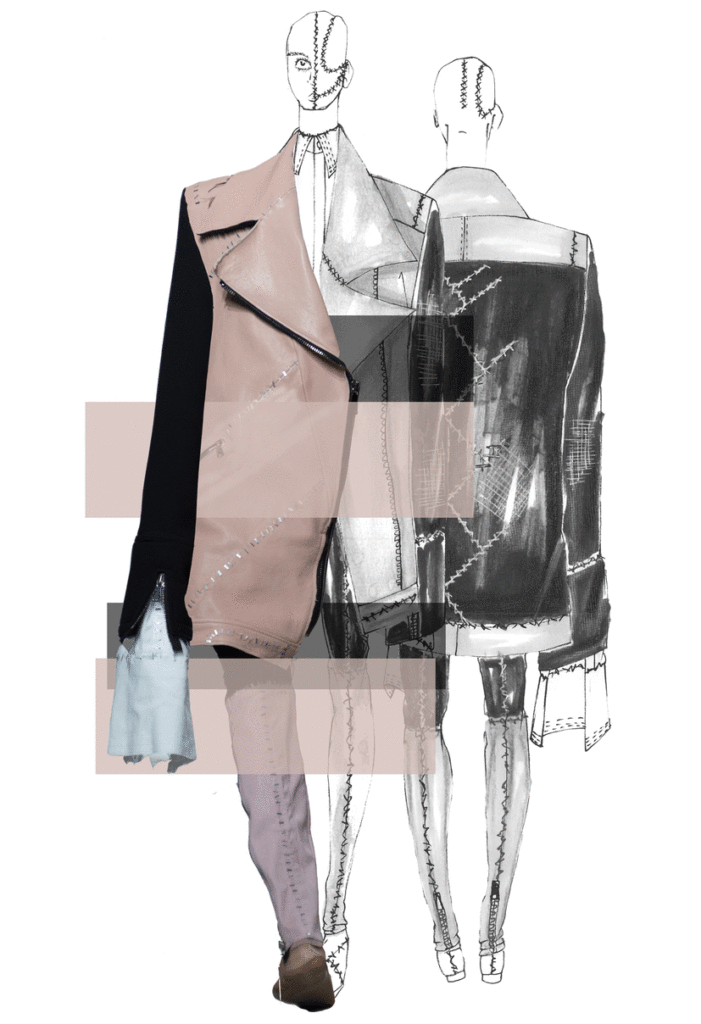 |
| Sketches from the graduate collection “Pancit0-penia” |
I structured the collection in four moments, like a tale divided
into four chapters repeatable in loop, through a continue process applicable to
each man in each moment of his life.
The first chapter is “Epithelial oedema”,
the moment in which the man wakes up in the morning discovering that everything
crashed and he begin to destroy himself. The second moment is “Suture”, in
which the man try to go on, suturing the tatters of his life. “Scars” is the
moment in which the man can breathe a sigh of relief because the wounds
are healing.
To arrive at the final moment, “Amputation”, in which the man who
has passed these bad moments going forward, also if loosing something. Then process can start again.
follows this process?
a universal concept, it’s the basis of the life itself. Is this process of
loss, pain and cure that makes the life so wonderful. Passing time I realize
that more than for a single collection, this concept is a kind of personal
manifesto as designer.
 |
| Inspirative image for the graduate collection “Pancit0-penia” |
development of this collection or it was a more natural creative process?
a year, before the required timetable. When I proposed this theme to my teachers
I’d already done 30 garments, with sketches and prototypes. They were able to give
me many ideas about the realization of the clothes and the elements to
emphasize for the general image, without impositions. My fashion design teacher, Domenico Civita,
helped me to clean up the outfits from all the excess I put-in during a frenzied
creative process.
 |
| Detail from the graduate collection “Pancit0-penia” |
The final thesis should have 15 outfits, while I presented
almost 40. It wasn’t a real problem, but I was scared because the school is
based on the high-level sartorial skills. They teached me for three years how to
make everything perfect and I was presenting something that was the opposite. But my collection was really appreciated and they gave me two special
mentions!
the feedback after that experience?
after the event, not only from fashion journalists, but also from fashion
houses. The first contact was at Gucci. Also if I didn’t yet found my dream-job and I’m
doing an unconventional fashion design, I’m on the right way.
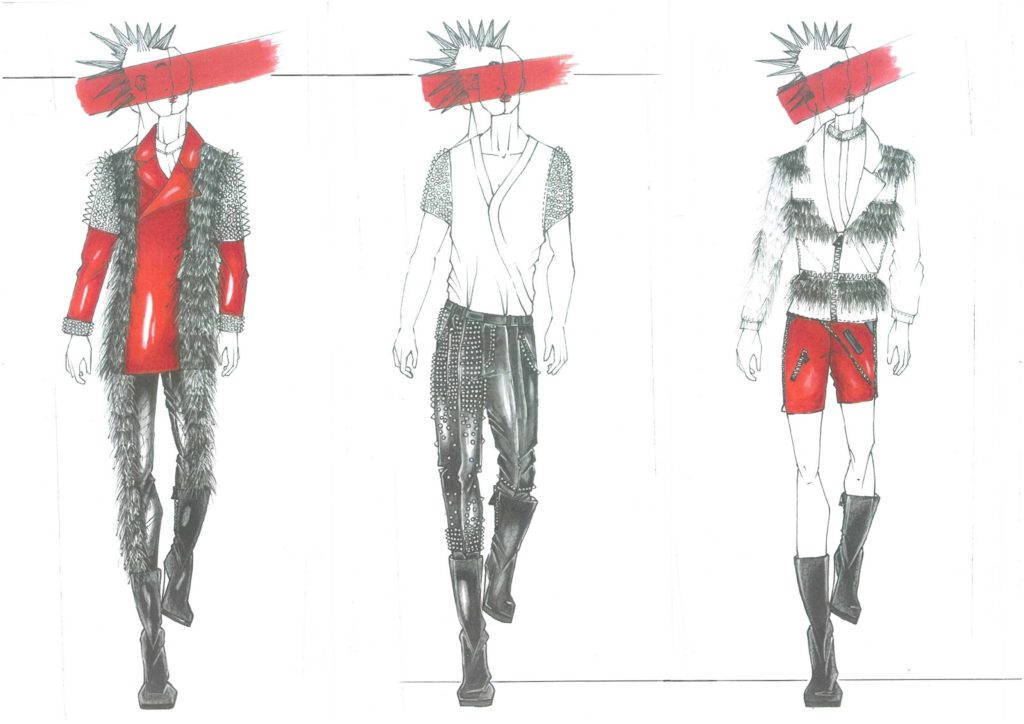 |
| Sketches by Filippo Todisco |
first desire is to find a mentor in a fashion house, someone who have my same
passion for fashion, with my same necessity to create something not just to
sell a collection each 3 months, but because it’s a mental and almost physical
need. Working shoulder to shoulder with this kind of person I could grow-up
more, especially if his style will be different.
 |
| Fashion sketch by Filippo Todisco |
And through Fashion Graduate Italia and your school
something’s moving?
placement service, but it’s more focused on modelling and tailoring, not
exactly what I want to do. Anyway when I was in Japan for a 1-month journey
last January, they called me for a special event, that will be called “Istituto
Secoli Alumni – Designer to Watch”. I can’t tell a lot about it, but it’s an
event launched by the school in collaboaration with important fashion magazines
to support and showcase young designers. So I’m working on this new project.
collection, what would be?
mono-color, but as a basis to narrate the thousands facets of a garment. In “Pancit0-penia”, black was the leitmotiv of the entire collection, used with different materials
and effects. Black is the basis of what I feel, think and want to communicate.
 |
| Mood of the graduate collection “Pancit0-penia” |
in many ways. Because I really think that they make a garment as something unique and
especially because in my particular vision about fashion all these awful
imperfections are the translation through threads and fabrics of the wonderful experience
that is life.
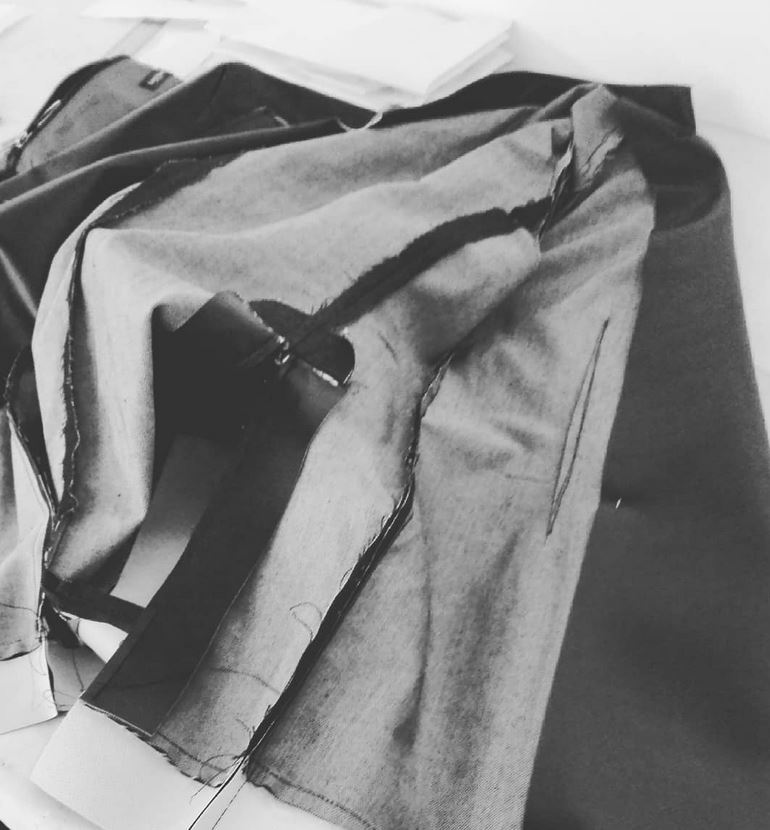 |
| Work in progress of the collection |
he/she want to be, deciding to wear my creations because are pieces that go above the
gender diversity. I like it and I buy it because it represents me.


